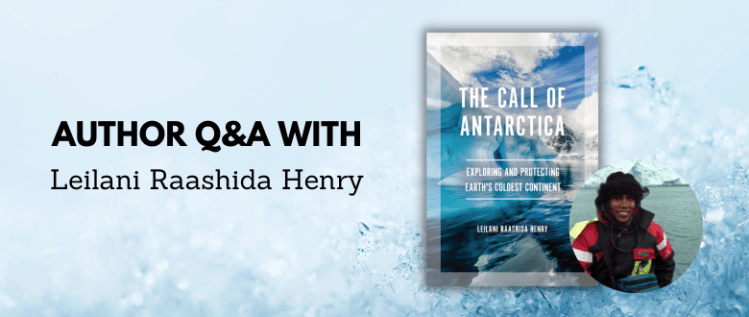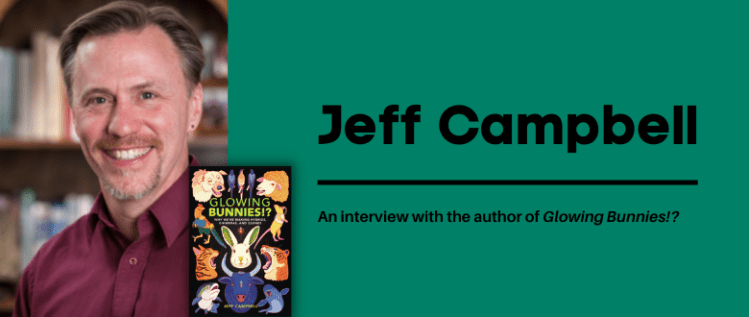The Call of Antarctica: An Interview with Author Leilani Raashida Henry

In November 1939, George Gibbs Jr. set out on an expedition to Antarctica aboard the USS Bear and became the first person of African descent to go to Antarctica. Eighty-two years later Leilani Raashida Henry, daughter of this brave explorer, takes readers on a journey to the rugged Antarctic landscape in The Call of Antarctica: Exploring and Protecting Earth’s Coldest Continent. Filled with diary entries from Gibbs’ expedition, she recounts her father’s expedition while educating readers on the incredible geography, biodiversity, and history of the continent.
Today we asked Leilani Raashida Henry a few questions about her experiences writing the book, her research process, and more! Read on to discover why Antarctica is one of the coolest places in the world and why it’s so important to protect this unique wilderness.
What was your favorite story your father told you from his voyage to Antarctica and why does this one stand out to you?
The USASE crew dug underground living quarters out of ice for the scientists to winter-over on the West Base of Little America III. My father told the story that many of the men would get stuck to the ice toilet while using it. When someone called for help, they received a flat red rubber hot water bottle to help dislodge them from the “Crystal Palace”. It stands out because even the simplest things in Antarctica require you stay present, so you can stay safe. It also made me laugh!
Please describe the research did you do for this project. Did you discover anything that surprised you in your father’s documents?
I purchased many Antarctic books for my own use. I traveled to the Scott Polar Research Center in Cambridge, England; The National Archives in College Park, Maryland; the Byrd Polar Research Center at Ohio State in Columbus, Ohio; the Schomburg Research Center for Black Culture in Harlem, New York, local libraries and many virtual resources.
Before he died, I visited Anthony Wayne, a crew member on the expedition and spoke with Robert Johnson, who was also crew on the Bear. Robert turned 101 in June of this year. I met and visited Jim Richardson, who let me dig through his father–Jack Richardson’s files. Jack was a dog driver on the West Base.
The biggest surprise from my father’s diaries is what he wrote about his sailing experience to and from Antarctica. When the ship stopped at ports along the way, he was treated as equal human being. Whites and Blacks weren’t segregated. He met Indigenous people in Chile and New Zealand and noted the connections he made with them, in spite of the language barrier. I found no other diaries where the men mentioned making connections with people of color.
How did you decide to balance historic events with present science?
Only a few places on Earth are as challenging to explore as Antarctica. Even fewer have had so little change in recent millennia. Antarctica’s ice carries the history of our planet. The vulnerability of its ecosystems and terrain can help us understand how we need to maintain ecosystems in other parts of the world. I was excited to learn that Antarctica was once tropical and wondered what that might offer for our scientific understanding of climate change.
What was the most challenging part about this project?
This project required me to use my journalism and education experience instead of being a content expert. The only information I started with were my father’s two diaries. I had to uncover more details of his experience, the USASE and learn about Antarctic science and history.
What was the most powerful or meaningful moment you had during your writing process?
I realized that I had a unique understanding of what draws people to Antarctica and what keeps them going back when I wrote a monologue for an art performance. Dr. Ted Scambos, who wrote my book forward loved it and wanted a copy for his office wall. My artist side fueled my persistence with the technical writing.
What didn’t make it into the book that you’d like people to know?
I wanted to put even more focus on the A in STEAM (science, technology, art, engineering and math). It’s important for us to remember how science and art support each other. Antarctica explorers have used both disciplines, from the very beginning of Antarctic exploration, to understand the continent.
My original title for the book was “We Are All Antarctica”. What happens to the continent happens to all of us. The Antarctic Treaty is a great start to stewardship. The rapid changes are a reminder that we need to move toward international consensus to protect Antarctica in the future.
What would you say to students who are interested in conservation?
“Don’t give up the ship!” as my father would always say. Conservation is a high priority and polar science is critical for helping humans continue to thrive on the planet.
We are the stewards of our planetary home. We need to be aware of the power we have to destroy — and to build — with our own minds or consciousness.
Part of a successful conservation process includes treating other people and the Earth’s ecosystem with the tolerance, appreciation, respect and the kindness we/it deserves. In turn, our lives can be sustained and celebrated.
Are you working on any writing projects now?
I’m finishing a play that focuses on the men’s experiences sailing to Antarctica on the USS Bear. It’s the human side of the expedition to remind us that ‘we are all in the same boat’—Planet Earth.
Praise for Call of Antarctica
“Antarctica is undeniably cool, and this volume makes sure we know it.”—Kirkus Reviews
” It puts you right there, on the ships, on the ice and in the bitter cold. The wonder, the challenges, the seafaring knowledge and yes, the racism, are a door to another era in Gibbs’ own words.” – YA Dude Books
More Resources
Article and Author Interview from the Post Bulletin
It’s been confirmed! The wreck of the USS Bear was found off the coast of Boston in 2019. Read more in this article from The Guardian.
Did you know scientists can study past climates and atmosphere by taking ice core samples from the Antarctic? Artist Wayne Binitie displayed images of these ice cores at the Polar Zero exhibit to complement the COP26 summit on climate change in Glasgow, UK. Learn more in this article from New Scientist!
Connect with the Author

To find more amazing author interviews on the Lerner blog click here:





Comments